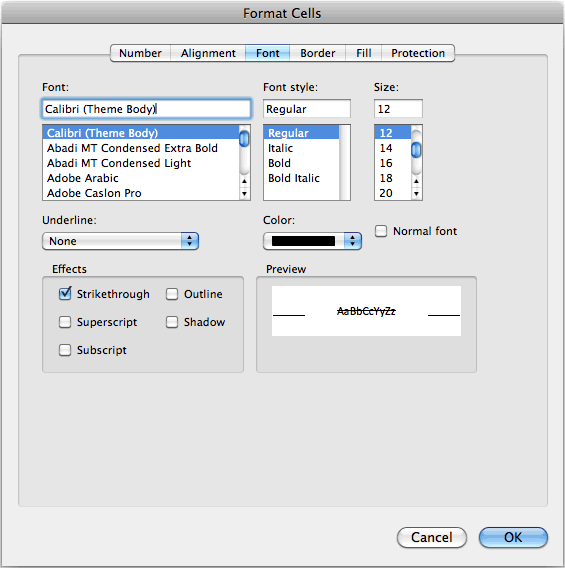Now, when you type the text 'mysig' and hit the spacebar in any program, whether it's Microsoft Word or a web form, you'll get the signature text. Creating a Hotkey for a Menu Item. By Peter Weverka. In Microsoft Word 2016, you can change the keyboard shortcuts. A keyboard shortcut is a combination of keys that you press to give a command. For example, pressing Ctrl+P opens the Print window; pressing Ctrl+S gives the Save command. To use this Office keyboard shortcut, you must first turn off the Mac OS X keyboard shortcut for this key. On the Apple menu, click System Preferences. Under Hardware, click Keyboard.
When we showed you how to master highlighting text with your mouse, commenters were quick to point out keyboard alternatives. Considering keyboard shortcuts are our first and only serious love, here's a few handy ways to navigate text without leaving the keyboard.
How to Master Text Highlighting with Your MouseDepending upon the font size of a document and your hand-eye coordination, it can be difficult to…
Read more ReadAdvertisement
Photo by liveandrock.
The battle between keyboard lovers and mouse lovers may never end (it's a personal thing), so we here at Lifehacker like to give equal time to both sides. (Okay, let's be honest—keyboard shortcuts generally get more than their share of time over the mouse.) If you felt left out by our previous text selection tips for mousers, let us make it up to you with the following keyboard-centric text-selection tips.
Advertisement
Universal Key Combinations
These key combinations should work in most every application:
- Home: Move cursor to beginning of the current line (Cmd+Left arrow on Mac).
- End: Move cursor to the end of the current line (Cmd+Right arrow on Mac).
- Ctrl+Shift+Left/Right arrow: Select text by whole words. (Alt+Shift+Left/Right arrow on Mac)
- Ctrl+Home: Move cursor to top of the text field (Cmd+Up Arrow on Mac).
- Ctrl+End: Move cursor to end of the text field (Cmd+Down Arrow on Mac).
- Shift+Left/Right Arrow: Select characters one at a time.
- Shift+Ctrl+Up/Down: Select paragraphs. (Shift+Alt+Up/Down on Mac)
- Shift+Up/Down arrow: Select text by entire lines
- Shift+Page Up/Page Down: Select one screen's height of text
- Shift+Home/End: Select all the text from the current caret position to the beginning or end of the current line. (Cmd+Shift+Left/Right arrow on Mac).
- Ctrl+Shift+Home/End: Select all the text from the current caret position to the beginning or end of the document. (Cmd+Shift+Up/Down arrow on Mac.)
- Ctrl+A: Select the entire document (Command+A on Mac)

Microsoft Word Specific
Once again, Word shines when it comes to text selection, offering more than just the standard key combinations:
- Ctrl+Shift+Up/Down arrow: Select text by paragraphs. (Cmd+Shift+Up/Down arrow on Mac.)
- Ctrl+Shift+F8: Begin selecting a rectangular block of text—use the arrow keys to size the rectangle; cut, copy, or press Esc to exit this selection mode. (Does not seem to work on Mac.)
- F8: Press repeatedly to expand the selection from the current word to the current sentence, then the current paragraph, and finally the whole document (Shift+F8 will shrink the selection); cut, copy, or press Esc to exit this selection mode. (Does not work on Mac.)
Advertisement
Share your own keyboard tricks in the comments.
In Microsoft Word 2016, you can change the keyboard shortcuts. A keyboard shortcut is a combination of keys that you press to give a command. For example, pressing Ctrl+P opens the Print window; pressing Ctrl+S gives the Save command. If you don't like a keyboard shortcut in Word, you can change it and invent a keyboard shortcut of your own.
You can also assign keyboard shortcuts to symbols, macros, fonts, building blocks, and styles.
Follow these steps to choose keyboard shortcuts of your own in Microsoft Word:
Text Color Generator
On the File tab, choose Options.
You see the Word Options dialog box.
Go to the Customize Ribbon category.
Click the Customize button (you can find it at the bottom of the dialog box next to the words 'Keyboard Shortcuts').
You see the Customize Keyboard dialog box, as shown here.
In the Categories list, choose the category with the command to which you want to assign the keyboard shortcut.
At the bottom of the list are the Macros, Fonts, Building Blocks, Styles, and Common Symbols categories.
Choose the command name, macro, font, building block, style, or symbol name in the Commands list.
In the Press New Shortcut Key box, type the keyboard shortcut.
Press the actual keys. For example, if the shortcut is Ctrl+8, press the Ctrl key and the 8 key — don't type out C-t-r-l- +8.
If you try to assign a shortcut that has already been assigned, the words 'Currently assigned to' and a command name appear below the Current Keys box. You can override the preassigned keyboard assignment by entering a keyboard assignment of your own.
If you want the keyboard shortcut changes you make to apply to the document you're working on, not to all documents created with the template you're working with, open the Save Changes In drop-down list and choose your document's name.
Click the Assign button.
When you finish assigning keyboard shortcuts, close the Customize Keyboard dialog box.
To delete a keyboard shortcut, display it in the Current Keys box, select it, and click the Remove button.
Is There A Key Command For Text Color In Word On Mac
You can always get the old keyboard shortcuts back by clicking the Reset All button in the Customize Keyboard dialog box.
